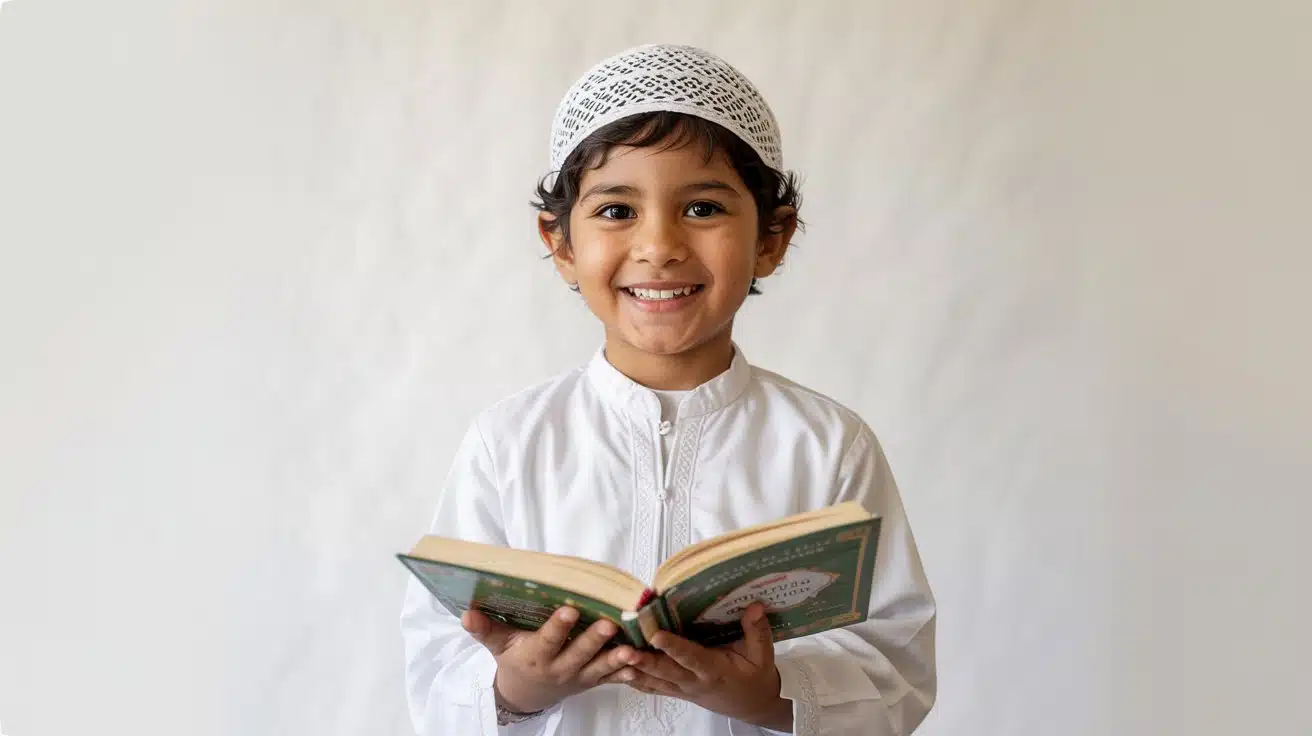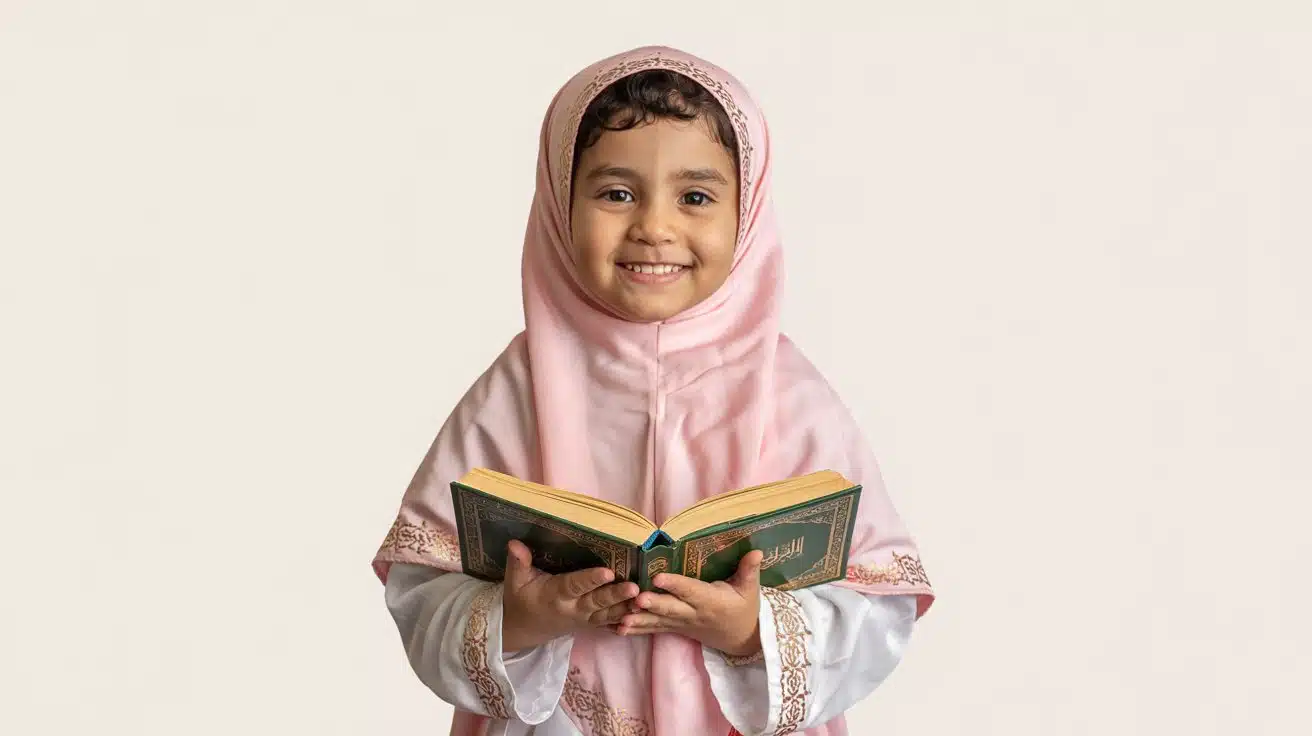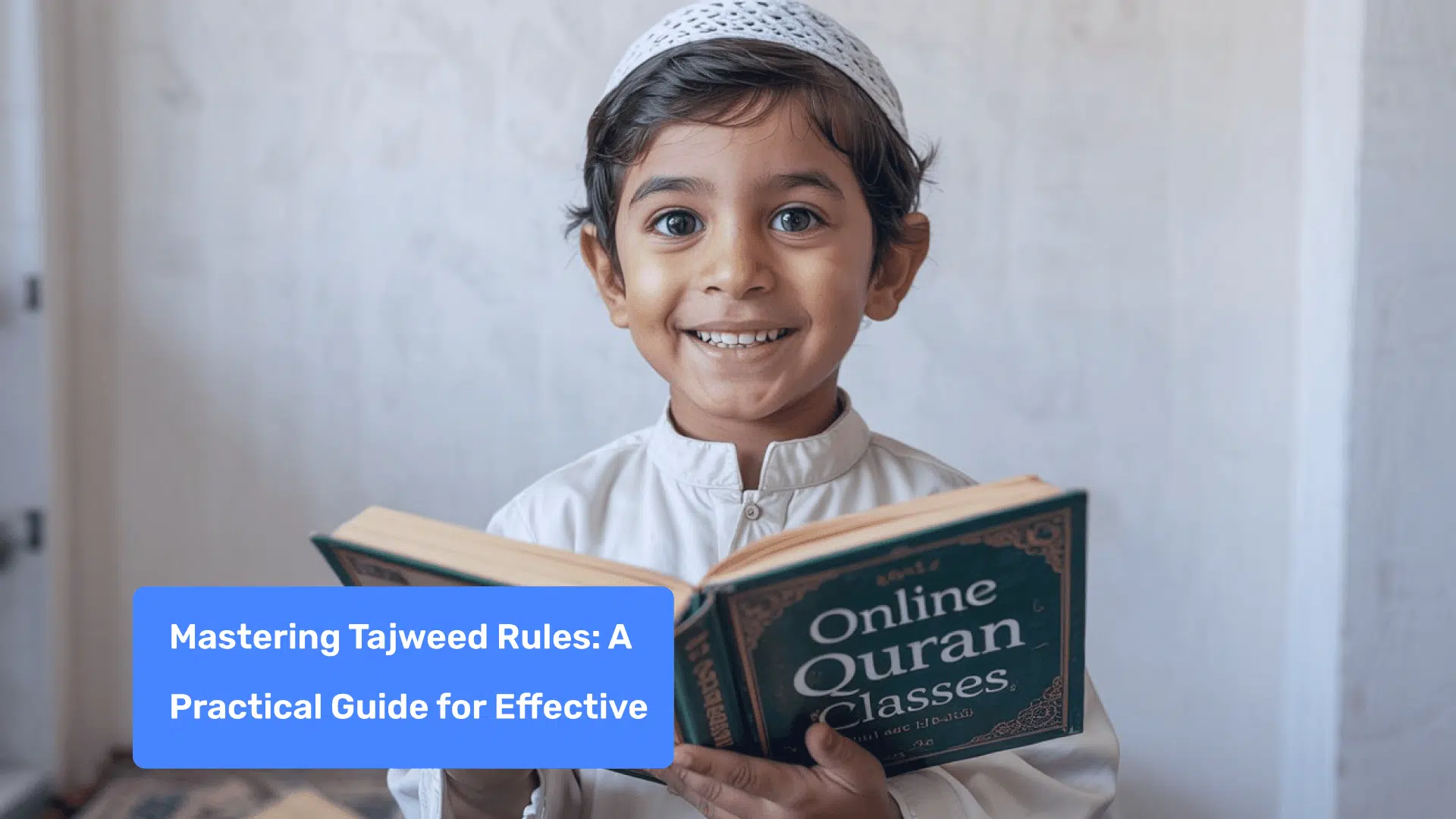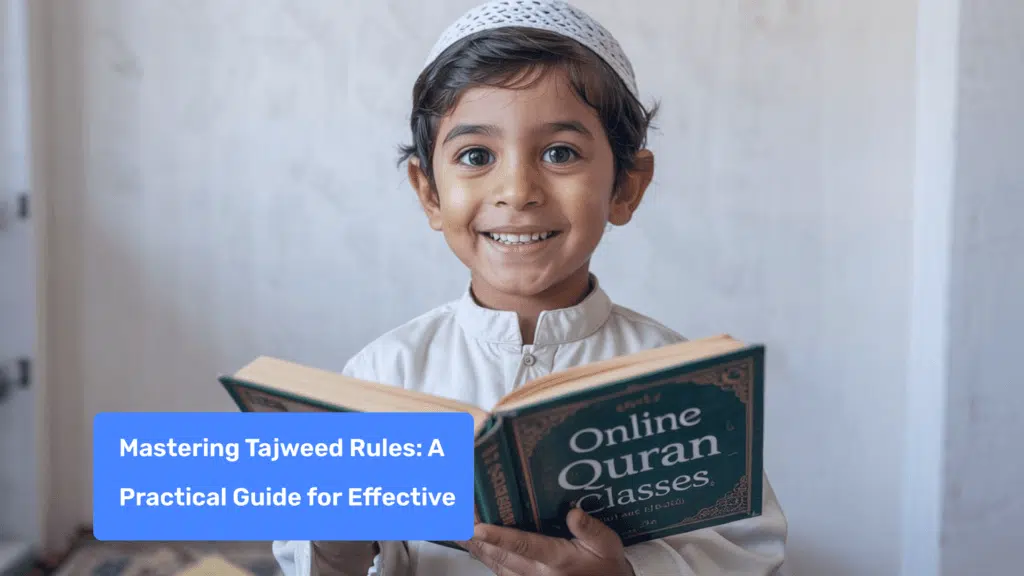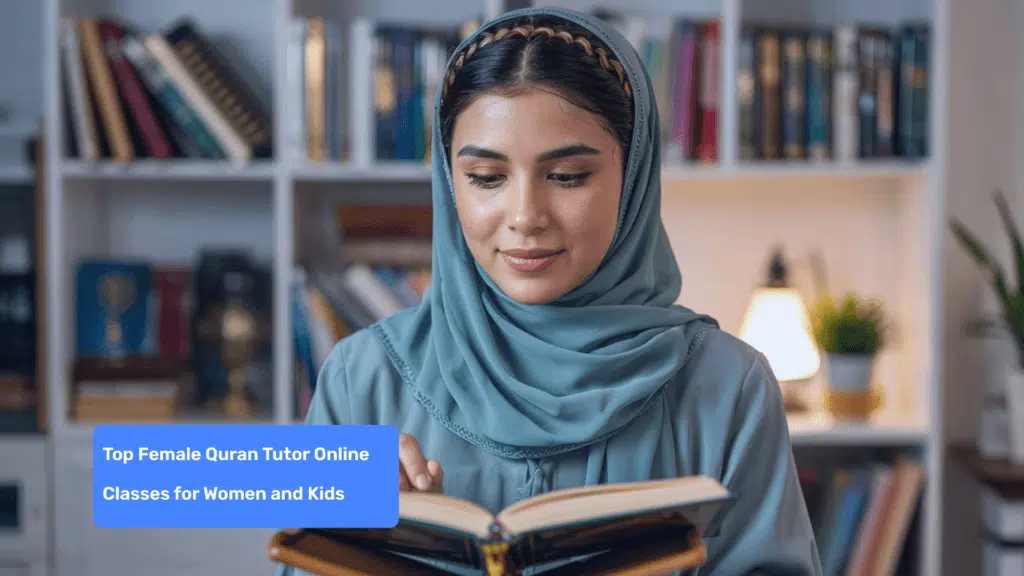Introduction to the Koran as a Central Religious Text
The Koran, also spelled Quran or Qur’an, stands as the most sacred text of Islam and holds unparalleled significance for over 1.8 billion Muslims worldwide. For believers, the Koran represents the literal word of Allah (God) as revealed to the Prophet Muhammad through the archangel Gabriel (Jibril) over a period of approximately 23 years, beginning in 610 CE. This divine revelation forms the cornerstone of Islamic faith, practice, and law.
Unlike many religious texts, the Koran is not primarily a historical narrative or a biography of its messenger. Rather, it serves as direct divine guidance addressing humanity across time and space. Muslims approach the text with profound reverence, considering its recitation, memorization, and implementation as acts of worship that bring them closer to their Creator. The chapters and verses of the Koran are not arranged in chronological or thematic order, which contributes to its unique structure. This non-linear arrangement interweaves themes across the text, enhancing the prophetic message and serving as a literary device.
The Koran addresses universal themes of human existence—contemplating the purpose of creation, humanity’s relationship with God, ethical living, social justice, and the ultimate questions of life after death. Its teachings provide Muslims with a comprehensive worldview and a practical framework for navigating all aspects of life, from the deeply personal to the broadly societal.
For non-Muslims seeking to understand Islamic beliefs and practices, familiarity with the Koran is essential. The text has profoundly shaped not only religious thought but also art, literature, architecture, governance, and cultural practices across the Muslim world. Its influence extends beyond religious boundaries, having contributed significantly to world civilization through its emphasis on knowledge, justice, and compassion.
In today’s increasingly interconnected world, understanding the Koran’s teachings and importance to Muslims serves as an important bridge for interfaith dialogue and cross-cultural understanding. This guide aims to provide readers with a fundamental understanding of the Koran’s origins, structure, content, and significance, offering insights into this remarkable text that continues to inspire and guide millions of people around the globe.
Etymology and Meaning
The word “Koran” derives from the Arabic verb “qara’a” (قرأ), which means “to read” or “to recite.” This etymology reflects the oral nature of its revelation and transmission. The full Arabic name of the text is “Al-Qur’an Al-Kareem,” meaning “The Noble Recitation.” The emphasis on recitation (rather than simply reading) highlights the significance Muslims place on the text’s oral dimension—its musicality, rhythm, and the spiritual experience of hearing and pronouncing the divine words.
In Islamic tradition, the first word revealed to Prophet Muhammad was “Iqra” (“Read” or “Recite”), establishing from the outset the importance of both oral transmission and literacy. This command to read—given to an unlettered prophet in a predominantly oral culture—signaled the high value Islam would place on knowledge, literacy, and intellectual engagement.
Beyond its literal meaning as “the recitation,” the Koran is known by many other descriptive titles within its own text, each reflecting an aspect of its nature and purpose. These include:
- Al-Furqan (The Criterion): It provides the standard for distinguishing truth from falsehood, right from wrong
- Al-Huda (The Guidance): It offers divine guidance for humanity
- Al-Dhikr (The Reminder): It serves as a reminder of eternal truths
- Al-Kitab (The Book): It emphasizes its status as a complete scripture
- Al-Nur (The Light): It illuminates the path toward spiritual and ethical living
These various designations point to the multifaceted role the Koran plays in the lives of believers—simultaneously a source of law, spiritual wisdom, ethical guidance, historical insight, and metaphysical truth. For Muslims, the Koran is not merely a book of religion, but a comprehensive manual for living that addresses all dimensions of human existence.
The concept of the Koran as the verbatim word of God distinguishes it from many other religious texts. Muslims believe the text has been preserved exactly as it was revealed, without human intervention or editing. This belief in its divine authorship and perfect preservation imbues the text with ultimate authority in Islamic thought and practice, making it the primary source for all religious, ethical, and legal matters.
The Arabic Language of the Koran
The Arabic language holds a distinctive position in Islam as the vehicle of divine revelation. The Koran states explicitly that it was revealed in “clear Arabic language” (26:195), establishing an inseparable relationship between the message and its linguistic medium. This relationship has elevated Classical Arabic to a sacred status, preserving it largely unchanged for over fourteen centuries—a remarkable linguistic phenomenon.
The Arabic of the Koran exhibits extraordinary linguistic features that Muslims consider miraculous. Its eloquence, rhetorical power, precision, and aesthetic beauty represent what classical Arab linguists regarded as the pinnacle of language. The text employs a rich array of literary devices—metaphor, imagery, assonance, rhythm, and structural patterns—that create a powerful auditory and intellectual experience.
This linguistic sophistication presents unique challenges for translation. Many scholars assert that the Koranic Arabic contains layers of meaning, nuances, and cultural references that cannot be fully captured in any other language. For this reason, while Muslims encourage translations to make the message accessible, these translations are considered interpretations rather than substitutes for the original Arabic text. Even Muslims who don’t speak Arabic traditionally learn to recite portions of the Koran in its original language for prayer and worship.
The Koran’s Arabic has profoundly influenced the development of Arabic literature, grammar, and linguistics. The need to preserve and understand the exact text spurred the development of Arabic grammar, lexicography, and phonetics as formal disciplines. The Koran’s linguistic style established standards of eloquence that would influence Arabic poetry and prose for centuries.
Beyond its impact on the Arabic language itself, the reverence for Koranic Arabic has had significant cultural implications. As Islam spread to non-Arabic speaking regions, the Arabic script was adapted for many languages including Persian, Urdu, and Malay, creating a vast sphere of cultural influence. Arabic calligraphy developed into a major Islamic art form primarily through the beautification of Koranic verses, reflecting the belief that divine words deserve the most exquisite visual representation.
The centrality of Arabic to Islamic worship has also created a unique global linguistic community. Muslims worldwide, regardless of their native language, share some familiarity with Koranic Arabic phrases and expressions used in daily prayers and religious discourse. This linguistic connection helps unify the diverse Muslim community across cultural and geographical boundaries.
English Translation and Interpretation
The translation of the Koran into English or any other language presents unique challenges that go beyond ordinary translation difficulties. Translators must navigate between faithfulness to the original text and readability in the target language, all while being mindful of the Koran’s status as a sacred text believed to contain divine speech.
The history of English translations of the Koran reflects changing approaches and motivations. Early translations by non-Muslims in the medieval and colonial periods often contained significant biases and misrepresentations, sometimes deliberately polemical. The twentieth century saw a shift toward more scholarly and objective translations, including those by Muslim translators seeking to convey the message authentically to English-speaking audiences.
Several major approaches to Koran translation exist, each with distinct advantages and limitations:
- Literal translations attempt to render the Arabic as precisely as possible, sometimes at the expense of natural English expression. These translations are valuable for linguistic study but may be difficult for general readers to understand.
- Dynamic equivalence translations focus on conveying the meaning and effect of the original rather than word-for-word correspondence, resulting in more readable texts that may sacrifice some of the textual features of the original.
- Interpretive translations incorporate explanatory material directly into the translation, helping readers understand contexts and implications that might otherwise be missed.
Customer reviews often highlight the clarity and accessibility of a good translation, emphasizing how these qualities are crucial for understanding complex themes within the texts.
Notable English translations that have gained widespread acceptance include those by Abdullah Yusuf Ali, Muhammad Marmaduke Pickthall, A.J. Arberry, Muhammad Asad, and more recently, M.A.S. Abdel Haleem. Each brings different strengths—Yusuf Ali’s extensive commentary, Pickthall’s dignified prose, Arberry’s literary quality, Asad’s rational approach, and Abdel Haleem’s contemporary accessibility.
Customer reviews frequently praise the quality and accessibility of a very good translation, noting how it provides a faithful rendition of the original texts while being engaging and revealing.
Most modern translations are accompanied by interpretive notes or commentary (tafsir) to help readers understand contexts, linguistic nuances, historical references, and theological implications. These commentaries often draw upon a rich tradition of Koranic exegesis developed over centuries by Muslim scholars.
For serious students of the Koran, comparing multiple translations can provide a more complete understanding, as each translation inevitably reflects particular interpretive choices. Additionally, many contemporary publications offer parallel Arabic-English texts, allowing readers to reference the original alongside the translation.
Despite advances in translation quality, most Muslim scholars emphasize that translations remain interpretations and cannot replace the original Arabic for religious purposes. The Arabic Koran is considered the only authoritative version for deriving religious rulings or theological positions. Nevertheless, translations fulfill the crucial role of making the Koran’s message accessible to the vast majority of Muslims and interested non-Muslims who do not read Arabic.
Contents and Structure
The Koran consists of 114 chapters (surahs), which vary significantly in length—from the longest (Surah Al-Baqarah) containing 286 verses to the shortest (Surah Al-Kawthar) with just three verses. Each surah has a distinctive name, often derived from a key word or concept mentioned within it, such as “The Cow” (Al-Baqarah), “The Family of Imran” (Ali ‘Imran), or “The Dawn” (Al-Fajr).
The arrangement of these chapters follows neither chronological nor strictly thematic order. Instead, with a few exceptions, they are generally organized in decreasing order of length—longer chapters appear near the beginning and shorter ones toward the end. This ordering was established during the compilation of the standardized text under the third Caliph, Uthman ibn Affan, and has remained unchanged since then.
Every surah except one begins with the phrase “Bismillah ir-Rahman ir-Rahim” (“In the name of God, the Most Gracious, the Most Merciful”), known as the Basmala. This opening invocation serves as a reminder that the words that follow are divine in origin and sets the tone of mercy that pervades the text.
The Koran contains various types of content interwoven throughout its chapters:
- Theological teachings: Passages explaining the nature of God, creation, divine attributes, and humanity’s relationship with the divine.
- Ethical and moral guidance: Instructions on personal conduct, social relationships, and the development of character.
- Legal pronouncements: Principles and specific rules governing various aspects of individual and communal life.
- Historical narratives: Stories of previous prophets, ancient civilizations, and their encounters with divine messages.
- Eschatological descriptions: Accounts of the afterlife, judgment day, paradise, and hell.
- Devotional passages: Texts intended to inspire worship, gratitude, and spiritual awareness.
- Polemical addresses: Responses to objections, criticisms, and challenges to the faith.
Scholars have traditionally categorized verses as either Meccan (revealed during Muhammad’s time in Mecca, generally focusing on theological foundations and spiritual matters) or Medinan (revealed after migration to Medina, often addressing social organization, law, and community relations). This classification helps in understanding the historical context and development of Koranic teachings.
The Koran frequently employs repetition as a rhetorical device, reinforcing key themes and concepts throughout different contexts. Rather than being organized as a linear narrative or systematic exposition, it presents its teachings in a way that invites readers to make connections between passages and reflect deeply on recurring motifs.
This distinctive structure creates a reading experience different from many other religious texts. Rather than proceeding from beginning to end, many Muslims engage with the Koran by focusing on particular chapters or passages relevant to specific occasions, questions, or spiritual needs. The text thus functions as both a unified whole and a collection of discrete units that can be meaningfully engaged with individually.
Creation and God
At the heart of the Koran’s message lies its conception of God (Allah) and His relationship with creation. The Koran presents a strictly monotheistic theology, emphasizing repeatedly that God is One, without partners, associates, or offspring. This concept of divine unity (Tawhid) represents the foundational principle of Islamic theology.
The Koran describes God through numerous names and attributes (traditionally counted as 99 “Beautiful Names”), each highlighting an aspect of divine nature. These include descriptions of transcendence (The Most High, The Incomparable) alongside immanence (The Near, The Responsive). The text emphasizes that God is simultaneously all-powerful and all-merciful, all-knowing and all-wise, just and forgiving.
The creation narrative in the Koran portrays God as bringing the entire universe into existence through divine command. “When He decrees a matter, He only says to it ‘Be,’ and it is” (2:117). This creation is presented not as a random occurrence but as a purposeful act reflecting divine wisdom. The natural world, with its order, beauty, and complexity, is repeatedly described as containing “signs” for those who reflect—evidence of divine design and care.
The Koran presents humans as occupying a special place in creation. The first human, Adam, was formed by God and infused with divine spirit. Humans are described as God’s vicegerents (khalifah) on earth, entrusted with responsibility for the world and granted the faculties of reason, moral discernment, and free will. This elevated status comes with accountability—humans will ultimately be judged based on how they fulfill their divinely appointed role.
Despite this special relationship, the Koran emphasizes the absolute ontological distinction between Creator and created. Unlike humans, God is described as eternal, self-sufficient, and unlike anything in creation. The text repeatedly states that God has no need for creation; rather, creation exists through divine mercy and grace. This asymmetrical relationship establishes worship as the appropriate human response to divine beneficence.
The Koran devotes considerable attention to correcting what it views as mistaken conceptions of God. It explicitly rejects anthropomorphism (attributing human form or qualities to God), polytheism (associating partners with God), and concepts such as divine incarnation or sonship. These theological boundaries established in the Koran have shaped Islamic thought throughout history.
Central to the Koranic understanding of God is the tension between divine transcendence (tanzih) and accessibility. While God is beyond human comprehension, the text also describes God as “closer to humans than their jugular vein” (50:16) and responsive to sincere prayer. This theological framework encourages both reverent awe and intimate devotion, creating a spirituality characterized by both humility before divine majesty and confidence in divine mercy.
Prophets and Messengers
The prophetic tradition occupies a central place in the Koran’s narrative. According to Islamic belief, God has sent prophets and messengers to every human community throughout history to guide them to truth and righteousness. The Koran mentions twenty-five prophets by name—including familiar biblical figures such as Adam, Noah, Abraham, Moses, David, and Jesus—while indicating that many others existed whose stories are not recounted.
These prophets are presented not as competing religious founders but as bearers of a single, continuous divine message adapted to particular times and contexts. The Koran depicts them as forming a spiritual brotherhood united by common purpose: calling humanity to monotheism, ethical living, and awareness of divine judgment. This concept of prophetic continuity establishes Islam not as a new religion but as a restoration and completion of the primordial faith.
Prophet Muhammad is presented as the final messenger in this prophetic lineage, bringing the definitive divine guidance for all humanity until the end of time. The Koran describes him as “the Seal of the Prophets” (33:40), indicating the culmination and closure of the prophetic cycle. Unlike some earlier prophets who were sent to specific communities, Muhammad’s message is presented as universal, addressing all of humanity regardless of time or place.
While the Koran acknowledges Muhammad’s humanity and limitations, it also establishes his unique spiritual status and authority. Followers are instructed to emulate his example, obey his teachings, and respect his judgment. His life and character are presented as the practical embodiment of Koranic values, making his biography (seerah) and recorded sayings and actions (hadith) secondary sources of guidance for Muslims after the Koran itself.
The Koranic narratives about earlier prophets serve multiple purposes. They provide historical context for Islamic teachings, demonstrate consistent divine concern for human guidance, offer moral lessons through their experiences, and validate Muhammad’s prophethood by showing its consistency with previous divine missions. These stories often focus on the challenges prophets faced—rejection, persecution, and the struggle to convey divine truth in hostile environments—providing both consolation and inspiration for believers facing similar difficulties.
The Koran gives special attention to certain prophets. Abraham (Ibrahim) is portrayed as the archetypal monotheist, rejecting idolatry through rational reflection and establishing devotional practices that would later become incorporated into Islamic worship. Moses (Musa) receives the most extensive treatment, his confrontation with Pharaoh symbolizing the eternal struggle between truth and oppressive power. Jesus (Isa) is deeply honored as a mighty messenger, miracle worker, and the Messiah, though the Koran explicitly rejects his divinity or divine sonship. This contrasts with the Christian perspective, where Jesus Christ is seen as divine and the Son of God, highlighting a significant theological divergence between the two faiths.
Ethico-Religious Concepts
The Koran establishes a comprehensive ethical framework that integrates moral principles with religious devotion. Unlike systems that separate ethics from religious practice, the Koranic worldview presents right conduct as inherently connected to faith. Good character and ethical behavior are portrayed not merely as social virtues but as expressions of spiritual authenticity and submission to divine will.
Central to Koranic ethics is the concept of taqwa, often translated as “God-consciousness” or “mindfulness of God.” This spiritual attitude combines reverence, love, and fear of God with heightened moral awareness. The Koran repeatedly identifies those possessing taqwa (the muttaqun) as the truly successful, suggesting that ethical living flows naturally from genuine spiritual awareness.
Justice (‘adl) features prominently in Koranic ethics. Believers are commanded to “stand firmly for justice” (4:135) even when it conflicts with self-interest, family connections, or community affiliations. This principle extends beyond formal legal contexts to encompass fairness in all human relationships, economic transactions, and social arrangements. The text emphasizes that justice applies equally to friend and foe: “Let not the hatred of others make you swerve to do wrong and depart from justice” (5:8).
The Koran also highlights the role of women within the framework of the Muslim faith, mentioning notable figures such as Mariam, the mother of Jesus, and other unnamed women, illustrating their significant roles in its narratives.
Compassion and mercy receive equal emphasis, reflecting the divine attributes most frequently invoked in the Koran. The text commands kindness toward parents, relatives, orphans, the poor, and the vulnerable. Forgiveness is highly praised, with numerous passages encouraging believers to forgive personal offenses while leaving ultimate judgment to God. This balance between justice and mercy creates an ethical framework that is neither harshly punitive nor naively permissive.
The Koran addresses interpersonal ethics through the concept of haqq (right, truth, reality), establishing that every being has rights that must be respected. These include material rights (property, fair compensation) and intangible rights (dignity, reputation, privacy). Fulfilling obligations toward others—honoring contracts, returning trusts, speaking truthfully—is presented as a religious duty rather than merely social convention.
Environmental ethics also feature in the Koran, which portrays humans as stewards rather than absolute owners of natural resources. The text repeatedly condemns wasteful consumption and environmental corruption (fasad), while encouraging appreciation of natural beauty as a manifestation of divine creativity.
The ethical teachings extend to internal states and attitudes—the Koran condemns envy, arrogance, miserliness, and other negative traits while praising humility, generosity, gratitude, and patience. This emphasis on inner virtues complements external actions, creating a holistic ethical vision concerned with both outward behavior and heart condition.
Rather than presenting ethics as abstract theory, the Koran grounds moral principles in concrete scenarios, historical examples, parables, and direct commands. This practical approach has made Koranic ethics accessible and applicable across different cultural contexts throughout history. While some specific injunctions address particular historical circumstances, the underlying principles—justice, compassion, integrity, responsibility—provide ethical guidance for new situations through analogical reasoning.
The Koran’s integration of ethics with spiritual practice creates a distinctive approach to moral development. Ritual worship (prayer, fasting, charity) is presented not as mere ceremony but as training in moral virtues—prayers should prevent shameful conduct (29:45), fasting should develop self-restraint (2:183), and charity should purify the soul (9:103). This connection between worship and ethics challenges any compartmentalization of life into separate religious and secular spheres.
The Koran as a Source of Law and Judgment
The Koran serves as the primary source of Islamic law (Sharia), providing the foundational principles and specific rules that have shaped legal systems across the Muslim world for centuries. Unlike purely religious texts focused exclusively on spiritual matters, the Koran addresses both devotional practices and social regulations, reflecting Islam’s comprehensive approach to human life.
The legal content of the Koran varies in specificity. Some areas receive detailed attention with explicit rules—particularly family law (marriage, divorce, inheritance), certain commercial transactions, and criminal prohibitions. Other domains are addressed through general principles and ethical guidelines that require interpretation and application to specific circumstances. This combination of specific injunctions and broad moral frameworks has allowed Islamic legal thought to develop with both stability and flexibility.
The Koran establishes several fundamental legal principles that have guided Islamic jurisprudence (fiqh). These include:
- The recognition of human dignity and fundamental rights
- The protection of life, religion, intellect, family, and property as essential interests
- The removal of hardship and facilitation of human well-being
- The promotion of public interest (maslaha) and prevention of harm
- The consideration of necessity and exceptional circumstances
- The gradualism in implementing legal and social reforms
While the Koran contains legal material, it is not structured as a legal code. Its legal verses are interwoven with historical narratives, theological discussions, and ethical exhortations. This integrated approach reflects the text’s view that law is not merely a technical system but part of a comprehensive divine guidance for wholesome human development.
The interpretation and application of Koranic legal material has been a central preoccupation of Muslim scholars throughout history. Various methodological approaches developed to derive legal rulings from the text, considering factors such as historical context, linguistic analysis, internal consistency, and harmony with the overall objectives of the revelation. These interpretive efforts gave rise to diverse schools of legal thought within both Sunni and Shia traditions.
The relationship between Koranic legislation and existing pre-Islamic customs demonstrates a nuanced approach to social reform. In some cases, the Koran completely rejected established practices (such as female infanticide). In others, it modified existing institutions to align with ethical principles (reforming marriage practices to protect women’s rights). In yet others, it affirmed beneficial customs that aligned with its moral vision (honoring contractual obligations). This selective approach to cultural norms established a methodology for addressing novel situations not explicitly covered in the text.
Contemporary Muslim thinkers continue to engage with the legal dimensions of the Koran in light of modern circumstances. Some emphasize the distinction between the changeless ethical principles of the text and the specific applications that may vary with historical context. Others focus on recovering the original reformist spirit of Koranic legislation to address contemporary social challenges. These ongoing interpretive efforts reflect the living nature of the text as a source of guidance across different times and places.
Eschatology and the Afterlife
The Koran devotes considerable attention to eschatology—the study of the end times and the ultimate destiny of humanity. This focus reflects the text’s fundamental concern with accountability and the consequences of human choices. The afterlife is presented not as a mythological appendix but as the culmination of divine purpose, the arena where cosmic justice is finally realized.
The Koranic narrative of eschatology begins with individual death, described as the return of the soul to its Creator. This transition initiates an intermediate state (barzakh) where souls await the Day of Judgment. The Koran provides limited details about this period, focusing instead on the eventual resurrection and final judgment.
The end of the world receives vivid description, with apocalyptic imagery of cosmic upheaval—mountains crumbling, seas boiling, stars falling, and the earth transformed. These cataclysmic events herald the resurrection (qiyamah), when all humans throughout history will be restored to bodily existence to face divine judgment.
The Day of Judgment stands as a central motif throughout the Koran, described with both terrifying grandeur and minute detail. On this day, according to the text, every soul will be held accountable for its beliefs and actions. Nothing will remain hidden—even forgotten deeds will be displayed in a comprehensive record of each life. Justice will be perfect, with no soul bearing another’s burden and none receiving more than its due.
The judgment process described in the Koran involves the weighing of deeds, the testimony of bodily members, and the presentation of records. Those whose good deeds outweigh their evil will receive their records in their right hands as a sign of salvation, while those whose evil predominates will receive theirs in their left hands or behind their backs, signifying condemnation.
Paradise (Jannah) is portrayed in sensuous, vivid imagery—gardens with flowing rivers, abundant fruits, comfortable furnishings, pure companions, and every desire fulfilled. Beyond these physical pleasures, the Koran identifies the greatest joy of paradise as divine pleasure and presence: “The pleasure of Allah is greater” (9:72). This spiritual dimension elevates the Koranic conception of paradise beyond mere physical gratification to encompass the fulfillment of humanity’s deepest spiritual yearnings.
Hell (Jahannam) receives equally detailed description, with imagery of fire, boiling water, painful food, and various forms of suffering. The Koran presents hell primarily as the natural consequence of rejection, ingratitude, and evil rather than arbitrary divine vengeance. While some passages suggest eternal punishment for certain categories of sinners, others emphasize divine mercy and the possibility of eventual relief, leading to diverse theological interpretations about the duration of hellfire.
The eschatological framework of the Koran serves several functions within its overall message. It provides powerful motivation for ethical behavior by establishing ultimate accountability. It offers consolation to the oppressed with the promise that final justice transcends worldly circumstances. It contextualizes current struggles within an eternal perspective, encouraging patience and perseverance. Perhaps most importantly, it presents human existence as meaningful and consequential—every choice matters within a cosmic moral order overseen by a just and merciful Creator.
Relationship with Other Holy Books
The Koran acknowledges and engages with earlier scriptural traditions, particularly the Jewish and Christian texts. It refers to the Torah (Tawrat), the Psalms (Zabur), and the Gospel (Injil) as divine revelations given to previous prophets—Moses, David, and Jesus respectively. This recognition establishes conceptual continuity between Islam and earlier monotheistic faiths, presenting them as progressive manifestations of a single divine plan rather than entirely separate religious systems.
While affirming the divine origin of previous scriptures, the Koran also claims a special relationship with them, described as “confirming” and “safeguarding” earlier revelations (5:48). This relationship has been understood in various ways by Muslim scholars. Some emphasize continuity, seeing the Koran as validating the essential message of previous scriptures while providing additional guidance. Others focus on the Koran’s role as the criterion (furqan) by which the authentic elements of earlier revelations can be distinguished from human additions or distortions.
The Koran contains numerous stories and figures familiar from biblical traditions, often with significant differences in detail or emphasis. These include accounts of Adam and Eve, Noah and the flood, Abraham’s willingness to sacrifice his son, Joseph’s rise to power in Egypt, Moses’ confrontation with Pharaoh, and Jesus’ miraculous birth and ministry. These parallel narratives create both points of connection and distinction between Islamic and Judeo-Christian traditions.
A complex aspect of the Koranic approach to earlier scriptures is its claim that some portions of previous revelations underwent tahrif (alteration or corruption) over time. The exact nature of this corruption—whether textual alteration or misinterpretation—has been debated by scholars. This concept explains perceived discrepancies between Koranic teachings and contemporary Jewish and Christian beliefs while maintaining respect for the original divine messages.
The Koran specifically addresses Jews and Christians as “People of the Book” (Ahl al-Kitab), granting them a special status distinct from polytheists or idolaters. While criticizing certain beliefs and practices of these communities, the text also acknowledges righteous individuals among them and permits various forms of social interaction, including intermarriage and shared meals—provisions that facilitated coexistence in historically Muslim societies.
In contemporary interfaith dialogue, the Koranic recognition of earlier scriptures provides both opportunities and challenges. It creates common ground through shared reverence for certain prophetic figures and moral principles. However, differing interpretations of concepts like divine revelation, prophethood, and scriptural authority can also become points of theological tension requiring careful navigation.
For Muslims, the Koran’s relationship with previous scriptures informs their approach to religious pluralism. The text both affirms the validity of earlier divine messages and asserts the comprehensive nature of its own guidance. This dual affirmation has supported various theological positions ranging from exclusivism to more inclusive approaches that recognize the possibility of salvation through faithful adherence to earlier authentic revelations.
Preservation and Transmission
The preservation history of the Koran represents a unique case in religious literature, combining elements of oral and written transmission from its earliest days. According to Islamic traditional accounts, the process began during Muhammad’s lifetime (570-632 CE), with companions memorizing revelations as they were received and scribes recording them on available materials such as palm leaves, bones, leather pieces, and stone tablets.
The first complete compilation into a single manuscript (mushaf) occurred under the first caliph Abu Bakr (r. 632-634 CE), prompted by the deaths of many memorizers (huffaz) in battle. This compilation, entrusted to Muhammad’s former secretary Zayd ibn Thabit, involved collecting and verifying written fragments against the memories of multiple companions who had heard the revelations directly from Allah’s Apostle. Zayd ibn Thabit, who had previously written down Divine Inspiration for Allah’s Apostle, played a crucial role in ensuring the accuracy and completeness of the text.
The standardization of the text took place under the third caliph Uthman ibn Affan (r. 644-656 CE), who commissioned multiple copies of an authoritative recension and distributed them to major Islamic centers. This initiative responded to emerging dialectal variations in recitation that threatened textual uniformity. The resulting Uthmanic codex established the canonical sequence of chapters and verses that remains standard today.
The early Arabic script used in these manuscripts lacked diacritical marks and vowel signs, allowing multiple reading possibilities for some words. To preserve the approved ways of recitation, a parallel oral tradition developed alongside the written text. This system of authorized readings (qira’at) was eventually formalized into distinct recitation traditions, each with slight variations in pronunciation or word form while maintaining identical core content.
The development of Arabic orthography in the late 7th and early 8th centuries CE added vowel marks and diacritical points to eliminate ambiguities in the written text. These modifications, attributed to scholars like Abu al-Aswad al-Du’ali and Al-Khalil ibn Ahmad, preserved specific readings while maintaining the original consonantal skeleton (rasm) of the Uthmanic codex.
Textual transmission benefited from the Islamic tradition of memorization. Each generation trained huffaz who committed the entire text to memory with precise pronunciation, creating a living chain of oral transmission complementing written copies. This dual system provided mutual verification, with neither memory nor manuscript alone serving as the sole authority.
Early manuscripts of the Koran have been discovered in various locations, including the Sana’a manuscripts in Yemen, the Topkapi manuscript in Istanbul, and the Birmingham Quran manuscript in the United Kingdom. Scholarly examination of these historical documents has generally confirmed the stability of the text, showing remarkable consistency with the Koran as it exists today.
The modern printed Koran emerged in the early 16th century with the development of Arabic typography. The Cairo Edition of 1924, based on one of the main reading traditions (Hafs from Asim), became the standard printed version widely used today. Contemporary digital technologies have further facilitated transmission, with numerous online platforms, mobile applications, and electronic resources making the text accessible globally.
Throughout this history of transmission, Muslims have maintained extraordinary reverence for textual accuracy. The memorization tradition continues robustly in modern times, with millions of Muslims worldwide committing the entire text to memory. Professional reciters (qurra) undergo rigorous training to master proper pronunciation, melodic patterns, and the complex rules of tajweed (proper recitation).
This multifaceted preservation system—combining written manuscripts, memorization, formal recitation rules, and careful authentication processes—has resulted in what Muslims consider an unparalleled case of textual fidelity, allowing contemporary readers to engage with the same words that first transformed Arabian society in the 7th century CE.
Critique and Controversy
Like all influential texts, the Koran has been subject to various critiques and controversies throughout history, both from within Islamic traditions and from external perspectives. These critical engagements reflect the text’s central importance in religious, political, and intellectual discourse across cultures and time periods.
Within Islamic scholarship, interpretive controversies have existed since the earliest generations. Debates emerged about how to understand seemingly anthropomorphic descriptions of God, the relationship between divine predestination and human free will, the contextuality versus universality of certain legal injunctions, and the proper hermeneutical approaches to ambiguous verses. These internal critiques generally operate within a framework that accepts the divine origin of the text while questioning particular interpretations.
Medieval polemic literature, particularly from Christian and Jewish sources, criticized aspects of Koranic theology, challenged its claim to divine authorship, and questioned perceived inconsistencies in the text. These critiques often reflected interfaith rivalries and the political tensions of their historical contexts rather than dispassionate scholarly analysis.
The emergence of Western academic study of the Koran (often termed “Orientalist” scholarship) in the 19th and early 20th centuries introduced historical-critical approaches that sometimes challenged traditional Islamic narratives about the text’s origin and compilation. Scholars like Theodor Nöldeke, Ignaz Goldziher, and later John Wansbrough proposed alternative chronologies, source theories, and developmental models for the text. While some of this scholarship contributed valuable insights, it occasionally reflected colonial attitudes and assumptions that have since been critiqued by postcolonial scholars.
Contemporary criticism often focuses on specific Koranic passages related to gender relations, interfaith engagement, punishment for certain offenses, and other topics that intersect with modern human rights discourse. These critiques frequently highlight tensions between traditional interpretations and contemporary ethical frameworks, particularly regarding women’s rights, religious pluralism, and punishment for apostasy or certain moral offenses.
Some critics have raised literary or structural objections, questioning the Koran’s organization, apparent repetitions, or stylistic features. These critiques often fail to consider the text’s primary nature as an oral recitation rather than a linearly organized written document, or they apply literary standards from other traditions that may not be appropriate to the Koran’s unique rhetorical style.
Muslims have responded to various critiques through multiple approaches. Traditional apologetics defends the internal consistency of the text and demonstrates how apparent contradictions can be reconciled. Historical scholarship challenges questionable assumptions
Significance in Islam
The Quran holds immense significance in Islam, serving as the central religious text and the primary source of guidance for Muslims worldwide. It is considered the word of Allah, as revealed to the holy prophet Muhammad through the angel Gabriel. The Quran is revered as a complete code of conduct, encompassing all aspects of life, from faith and worship to social and moral behavior. Its significance is evident in the daily lives of Muslims, who recite its verses during prayers, seek guidance from its teachings, and strive to implement its principles in their personal and communal lives.
The Quran’s importance is further underscored by its role in shaping Islamic law, which is based on its teachings and interpretations. The holy book is also a source of inspiration for Muslims, providing comfort, solace, and spiritual nourishment. Its significance extends beyond the individual, as it serves as a unifying force for the global Muslim community, transcending cultural, linguistic, and geographical boundaries.
In the Islamic world, the Quran is considered a sacred text, and its recitation is an integral part of daily life. Muslims speak Arabic, the language of the Quran, to recite its verses and to communicate with Allah during prayers. The holy book’s significance is also reflected in the numerous translations and interpretations that have been produced over the centuries, catering to the diverse needs of Muslims worldwide.


